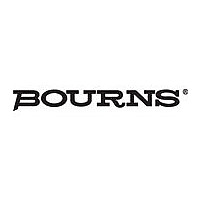TISP61089BSD Bourns, Inc., TISP61089BSD Datasheet - Page 18

TISP61089BSD
Manufacturer Part Number
TISP61089BSD
Description
Dual Forward-conducting P-gate Thyristors Programmable Overvoltage Protectors
Manufacturer
Bourns, Inc.
Datasheet
1.TISP61089BSD.pdf
(20 pages)
The overcurrent protector should not allow current-time durations greater than the TISP61089BSD current ratings otherwise the
TISP61089BSD may fail. A satisfactory fusible resistor performance is shown in Figure 20. The line feed resistor (LFR) current-time curve is
above the first level currents and below the TISP61089BSD rated current for V
2 x 40 Ω, 2 % tolerance, 0.5 % matched resistor module. Fusible resistors are also available with integrated thermal fuses or PTC thermistors.
Thermal fuses will cause a rapid drop in the operating current after about 10 s. Figure 20 shows the fused LFR curve for a Bourns® 4B04B-524-
400 2 x 40 Ω, 2 % tolerance, 0.5 % matched resistor module with an integrated thermal fuse links. The Bourns® 4B04B-524-400 allows the
TISP61089BSD to operate down to its full rated voltage of V
resetable current limiting function for all but the highest currents.
Ceramic PTC thermistors are available in suitable ohmic values to be used as the series line feed resistor R
ceramic PTC thermistor operating characteristic. Some of the first level tests will cause thermistor operation. Generally the resistance matching
stability of the two PTC thermistors after power fault switching lightning will meet the required line balance performance.
Ceramic PTC thermistors reduce in resistance value under high voltage conditions. Under high current impulse conditions the resistance can
be less than 50 % of the d.c. resistance. This means that more current than expected will flow under high voltage impulse conditions. The
manufacturer should be consulted on the 2/10 currents conducted by their product under ‘1089 conditions. To keep the 2/10 current below
120 A may need an increase of the PTC thermistor d.c. resistance value to 50 Ω or more. In controlled temperature environments, where the
temperature does not drop below freezing, the TISP61089BSD 2/10 capability is about 170 A, and this would allow a lower value of resistance.
Generally polymer PTC thermistors are not available in sufficiently high ohmic values to be used as the only line feed resistance. To meet the
required resistance value, an addition (fixed) series resistance can be used. Figure 22 overlays a typical polymer PTC thermistor operating
characteristic. Compared to ceramic PTC thermistors, the lower thermal mass of the polymer type will generally give a faster current reduction
time than the ceramic type. However, in this case the polymer resistance value is much less than the ceramic value. For the same current level,
the dissipation in the polymer thermistor is much less than the ceramic thermistor. As a result the polymer thermistor is slower to operate than
the ceramic one.
The resistance stability of polymer PTC thermistors is not as good as ceramic ones. However, the thermistor resistance change will be diluted
by additional series resistance. If a SLIC with adaptive line balance is used, thermistor resistance stability may not be a problem. Polymer PTC
thermistors do not have a resistance decrease under high voltage conditions.
Overcurrent and Overvoltage Protection Coordination (Continued)
TISP61089BSD High Voltage Ringing SLIC Protector
Figure 20. Line Feed Resistor - with and without Thermal Fuse
0.15
1.5
0.8
0.6
0.5
0.4
0.3
0.2
50
40
30
20
15
10
8
6
5
4
3
2
1
0.01
25 Ω & 40 Ω
First Level
through 5,
Tests # 1
LFR
0.1
CURRENT DURATION
GG
t — Current Duration — s
= -155 V. An LFR with integrated PTC thermistors will give an automatically
PEAK AC
1
Fused LFR
vs
10
V
GG
GG
> -100 V. This particular curve is for a Bourns® 4B04B-523-400
= -120 V
Customers should verify actual device performance in their specific applications.
V
100
GG
= -60 V
AI6XDKA
1000
Specifications are subject to change without notice.
S
. Figure 21 overlays a typical
SEPTEMBER 2005 - REVISED MAY 2007











